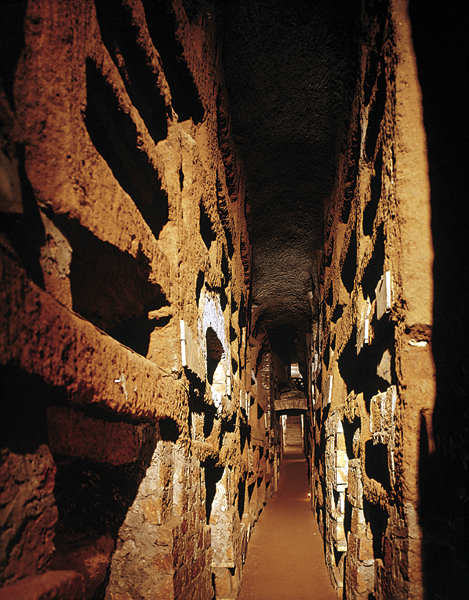Image Details

Erich Lessing
Prime real estate. Catacombs, such as the Catacomb of Callistus (shown here), were a standard place of burial for many Romans in the early part of the common era, no matter what their faith; contrary to popular belief, they were not built by Christians as a haven from persecution. Instead, early Christians and Roman Jews, who differed from many pagan Romans in their disapproval of cremation, found underground cemeteries to be a solution to the problem caused by the high cost of land in Rome. Catacombs were used for burials until the early fifth century.
Catacombs could have a number of levels and extend for miles. Thousands of bodies could be buried along the walls and in the floor. The simplest tombs were niches in the passageway walls, such as the ones shown here. But richer families and high church officials carved private burial chambers out of the soft Roman stone, called tufa. In both simple and elaborate burials, a horizontal slot would be cut into the wall for the body. Once the body was placed in the burial niche, or loculus, the opening would be sealed with a marble or terra-cotta slab bearing the name of the deceased and some kind of decoration. Following pagan tradition, Christians would often meet in the catacombs for special services or memorial meals with their dead, and burial chambers often contained tables, chairs and altars to accommodate these visitors.
